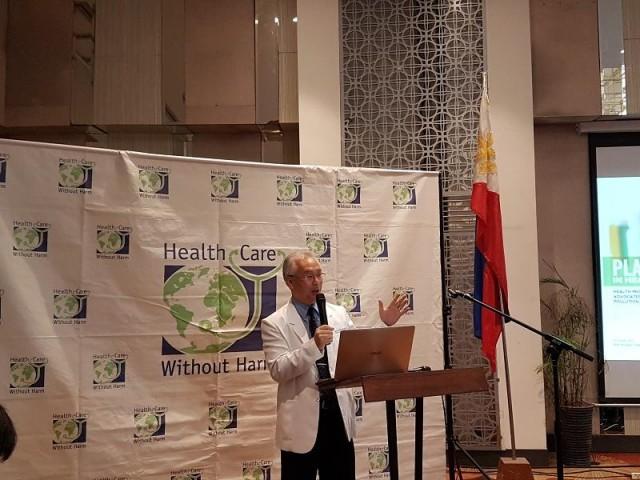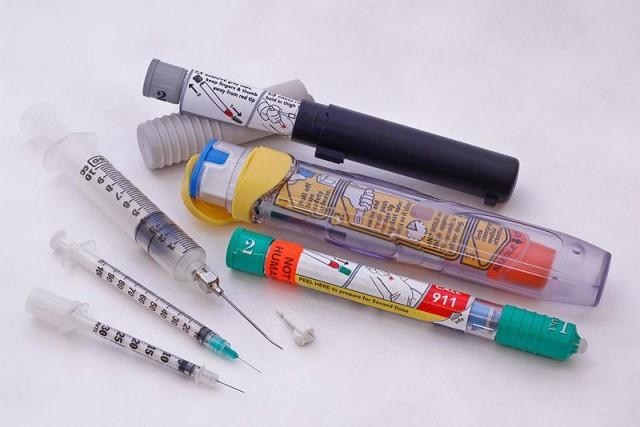Advocacy group: PHL hospitals generate huge amounts of plastic waste
Advocacy group HealthCare Without Harm Asia (HCWH) recently published a Waste and Brand Audit report, which said Philippine hospitals may be contributing to the influx of plastic waste in the country.
Funded by the Break Free from Plastic movement, the report audited two countries, the Philippines and Indonesia, from July to September 2018. During the time period, five hospitals were audited in a span of five days.
The report discovered huge amounts of plastic products in the hospital waste of these hospitals hospitals.
“The percentage of plastics in a hospital waste stream is between 49% and a staggering 72%” the report said.
Some of the audited plastic products include: packaging, syringes, intravenous (IV) tubing and accessories, PET bottles and disposable food ware.

The report also mentioned three manufacturers whose products were present both in the HCWH hospital audit and in a previous Break Free From Plastic audit: Nestle, Danone and Monde Nissin.
"These three manufacturers were ranked among the top ten manufacturers whose products were found in the HCWH hospital audit," said Ms. Pats Oliva, communications officer of HCWH.
GMA News Online reached out to the three manufacturers but only Danone replied.
"Danone has no business with the healthcare systems of the Philippines, and as the report shows, no products in Philippine hospitals," said William Green, General Secretary for Asia Pacific and the Middle East.
“I was alarmed”
Dr. Glenn Paraso, chief operating officer of the Tondo-based Mary Johnston Hospital, expressed dismay when he first read the results of the audit.
“I was alarmed, myself. Fifty-four percent of our hospital’s waste come from plastics. We have a long way towards communicating [the reduction of plastics] to our patients and to our staff. Even in the office of the technical director, the staff would also be throwing plastics,” Paraso shared at the report's presentation last November 22 in Quezon City.
Doctors are required to take the Hippocratic Oath, which obligates them to do no harm.

If the healthcare industry uses too much plastic, Dr. Paraso says that it would do more harm than good to communities.
“In the long-term, [plastic waste] exposes everyone to vulnerabilities,” Paraso said.
Meanwhile, Sister Arcelita Sarnillo, administrator of St. Paul Hospital, Cavite, did not expect to find huge amounts of plastic in her hospital’s waste when she read the audit report.
In July this year, her hospital issued a ban on the use of plastic and styrofoams by food chains. She thought that the policy would curb the presence of plastics in hospital waste.
“When I saw the results, I was surprised and alarmed because plastic waste composed of 72 percent. I observed that most of the plastic came from the medical supplies used by the hemodialysis unit which used IV tubings, IV bottles, PET bottles, and the plastic water bottles,” Sarnillo noted.
According to her, investing in sustainable alternatives might be costlier, but that is nothing compared to long-term effects of hospital waste.
“If we're not conscientious on how we take care of our waste…we will be first ones to be contaminated,” Sarnillo said.

‘Anchors of sustainability’
“Based on the results of the audit, if the participating hospitals were able to avoid single use drinks, bottles and disposable foodware, over 40 tonnes of waste each year would be eliminated,” the HCWH report said.
Aside from waste elimination and reduction, other hospitals should also consider recycling PVC products, PET bottles, and IV bottles; as well as the proper disposal of plastic.
According to Ramon San Pascual, the Executive Director of HCWH, the audit report is the first of its kind in Asia, focusing on two countries that were top sources of marine waste.
“A study like this, even if it is not representative of all the hospitals or the healthcare system in a particular country, can influence behavior in hospitals and policies of [plastic] manufacturers,” he explained.
He acknowledged that the cooperation of doctors and healthcare administrators was crucial in reducing the carbon footprint of hospitals.
“Public health is an environmental health issue. Our goal is to reduce harm to patients and reduce harm to the environment. In the end, we believe that healthcare facilities or hospitals should be the anchor of sustainability in their respective communities,” he said. — LA, GMA News





